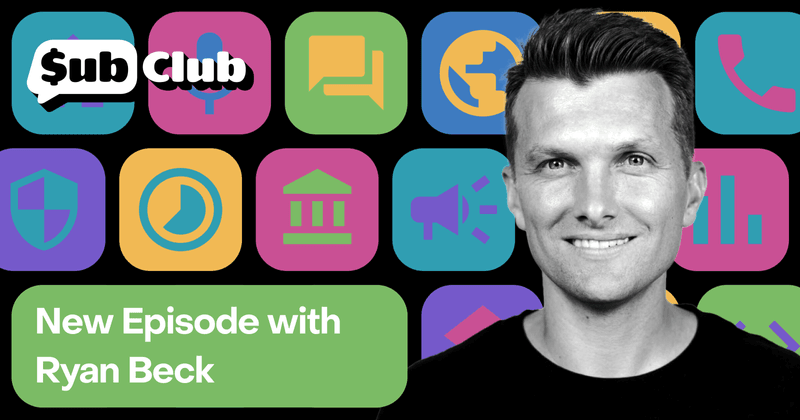This week on the Sub Club podcast, we’re joined by Ryan Beck, co-founder and CTO at Pray.com, an app designed to grow faith, cultivate community, and leave a lasting impact through digital tools for religious organizations. Ryan talks about building a multi-faith platform, the challenges of engaging older demographics with mobile subscriptions, and how Pray.com successfully monetized while maintaining the trust of a faith-driven community.
A return to traditional marketing channels
One of the key challenges Ryan and his team faced at Pray.com was engaging older, high-value users. While younger audiences are usually quick to adopt new apps, older users are often more hesitant. Ryan explains how modern marketing tactics like viral social media campaigns weren’t as effective for this demographic. Instead, the team leaned on more trusted advertising resources such as TV and radio, where older users were more likely to engage. By meeting their audience where they were comfortable, Pray.com was able to effectively grow their user base among this group.
Ryan also emphasized the importance of building trust with older users. Digital spaces can feel unfamiliar to this demographic, so Pray.com made sure their brand was represented in ways that aligned with traditional values. This helped ease the transition to a digital platform for religious organizations that had historically been slower to adopt new technology. By focusing on building trust and offering value through familiar channels, Pray.com found success in reaching a demographic often underserved by tech companies.
Balancing revenue and mission
While Pray.com is driven by a mission to support faith communities, Ryan is clear that revenue remains the ultimate KPI for the business. The app initially relied on donations as a revenue stream, but that wasn’t sustainable for long-term growth. So Ryan and his team introduced a subscription model, which allowed them to offer premium services while still providing free features. He stresses that this approach was key to maintaining a balance between serving the community and growing the business (without alienating their user base).
The transition to monetization wasn’t without its challenges — users generally expect faith-based services to be free. However, Pray.com made its premium features an enhancement rather than a necessity so that users who saw the value of these features could pay for them if they wished, while users who didn’t want to pay could continue to use the free version. This approach allowed Pray.com to maintain customer satisfaction while still meeting their revenue goals.
Data and diversification
Pray.com’s growth strategy is heavily data-driven. From tracking user engagement to analyzing the effectiveness of ad campaigns, the team uses data to make informed decisions that drive growth. One lesson they learned the hard way? Don’t build all of your paid ads around a single creative. As Ryan points out, this approach can backfire if a platform like Meta suddenly rejects the creative — and all of the associated ads stop running at once. To avoid a situation like this, diversify your ad spend across multiple creatives so that if one is unexpectedly pulled, others will continue to run and drive revenue.
Ryan also highlights how his team’s data-driven approach extends to the app’s feature development. By closely monitoring user behavior and engagement, the team can quickly adapt their offerings to meet the needs of their audience. This has allowed Pray.com to stay agile and responsive in a fast-evolving digital landscape.
Conclusion
By staying true to their mission, leveraging trusted media, and using data to drive decisions, Pray.com has created a sustainable business that fosters deeper connections in the faith space. Listen to our full conversation with Ryan to learn more about the intersection of faith and technology and Pray.com’s data-driven growth strategy.

